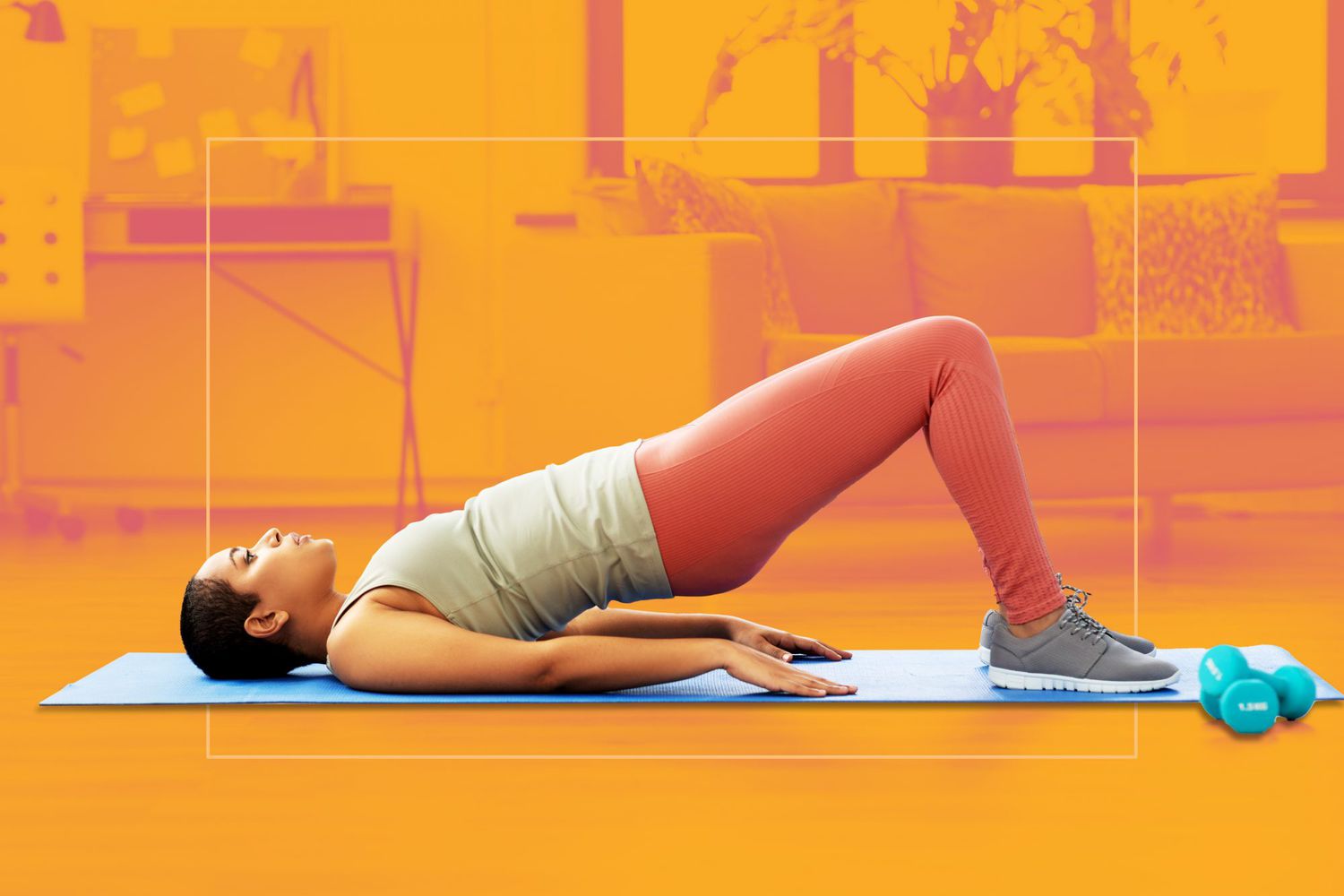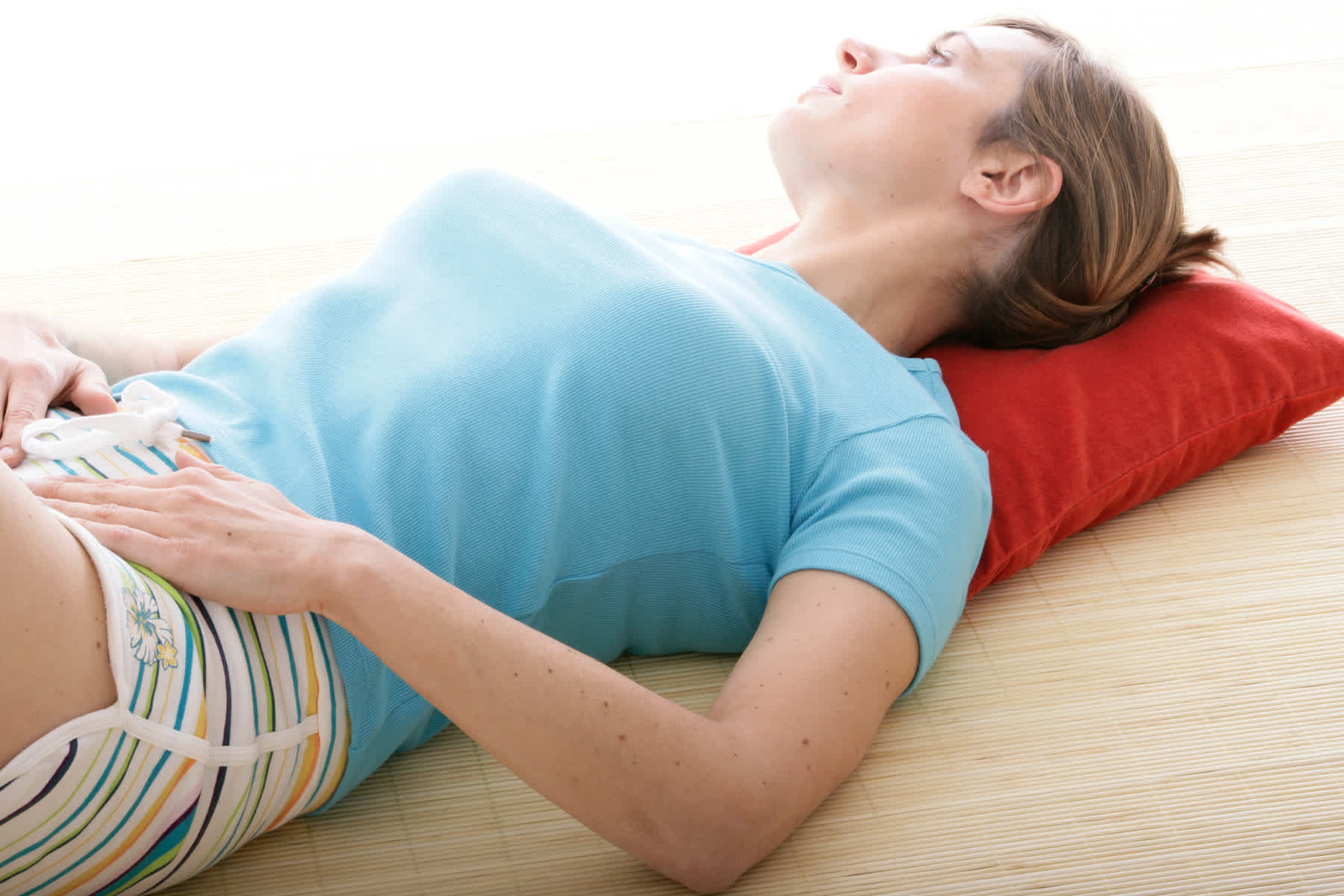Experiencing pelvic pain after exercising is common, especially among women. The pain can range from mild soreness to severe cramping which makes it difficult to continue your workout. While the exact cause is often unclear, things like stress on the pelvic floor muscles, irritation of nerves or tissue, or menstrual issues may contribute. But fear not! The good news is that with some simple self-care strategies, you can often find relief. In this post, we will share effective strategies to relieve pelvic pain after exercise.

Contents
How To Relieve Pelvic Pain After Exercise?
Here are some strategies that can help you overcome this discomfort and get back to your workouts pain-free.
1. Stretch Your Pelvic Floor Muscles:
One effective way to relieve pelvic pain is by stretching your pelvic floor muscles. These stretches can help loosen tightness and improve mobility in the pelvic area. Here are a few exercises you can try:
- Kegels: These exercises involve contracting and relaxing the muscles that control urine flow. They can help strengthen your pelvic floor and alleviate pain.
- Bridges: This exercise targets the glutes, hips, and lower back. It can help improve pelvic alignment and reduce pain.
- Child’s Pose: This yoga pose gently stretches the hips, thighs, and lower back, providing relief for pelvic discomfort.
2. Practice Pelvic Floor Relaxation:
Tight and painful pelvic floor muscles can contribute to pelvic pain. Relaxation exercises can help alleviate muscle tension and provide immediate relief. Try the following techniques:
- Deep breathing: Focus on deeply inhaling and exhaling, allowing your pelvic floor muscles to relax with each breath.
- Progressive muscle relaxation: Starting from your feet, systematically tense and relax each muscle group in your body, including your pelvic floor.
3. Maintain Proper Posture and Alignment:
Sometimes, pelvic pain can be caused by misalignment or poor posture during exercise. Pay attention to your form and make sure you’re maintaining proper alignment. Here are a few tips:

- Engage your core: Strengthening your abdominal muscles can help stabilize your pelvis and reduce strain on the pelvic area.
- Ensure proper alignment: Check that your knees, hips, and shoulders are in line during exercises. Avoid excessive arching or rounding of the back.
Causes of Pelvic Pain after Exercise
There are several factors that can contribute to pelvic pain after exercise. Understanding these causes can help you identify the source of your discomfort and take appropriate action. Here are some common culprits:
- Tight hip flexors: The hip flexor muscles, located at the front of your hips, can become tight and tense due to prolonged sitting or excessive exercise. This can put a strain on the pelvic area and lead to pain during or after workouts.
- Weak abdominal muscles: Insufficient strength in the abdominal muscles can put additional stress on the pelvic region. When the core muscles are weak, the pelvis may not be properly supported, causing pain during exercise.
- Pelvis misalignment: The pelvis is a complex structure that can become misaligned due to various reasons such as poor posture, muscle imbalances, or previous injuries. When the pelvis is out of alignment, it can create asymmetrical forces during exercise, leading to pelvic pain.
- Overtraining: Pushing your body too hard without adequate rest and recovery can lead to overuse injuries, including pelvic pain. Giving your body enough time to recover between workouts is crucial in preventing exercise-related discomfort.
- Hormonal imbalances: Fluctuations in hormone levels, such as estrogen and progesterone, can affect pelvic health. Hormonal imbalances can lead to increased sensitivity and pain in the pelvic area during exercise.
Exercises to Avoid with Pelvic Floor Muscle Tension
Here are some exercises to avoid if you have pelvic floor muscle tension:

- High-impact exercises: Activities like running, jumping, and intense aerobic workouts can put excessive pressure on the pelvic floor. Avoid these exercises as they may worsen your symptoms.
- Heavy weightlifting: Lifting heavy weights can increase intra-abdominal pressure, which can strain the pelvic floor muscles. Opt for lighter weights or modify your lifting technique to reduce the load on your pelvic floor.
- Deep squats and lunges: These exercises involve significant activation of the pelvic floor muscles. While they can be effective for building lower body strength, they may also exacerbate symptoms of pelvic floor muscle tension. Consider modifying your squat or lunge technique to lessen the impact on your pelvic floor.
- Sit-ups and crunches: Traditional abdominal exercises that involve repetitive flexion and extension of the spine can increase pressure on the pelvic floor. Instead, choose core exercises that engage the muscles without putting excessive strain on the pelvic floor, such as planks or modified crunches.
- High-resistance exercises for the inner thighs: Exercises that involve squeezing or clenching the inner thighs with high resistance, such as using a thigh machine at the gym, can contribute to pelvic floor muscle tension.
Frequently Asked Questions
Should I exercise with pelvic pain?
It is important to start moving when experiencing pelvic pain. Exercise can include stretching, walking, running, yoga, and weight lifting. Listen to your body and start with gentle movements to avoid exacerbating the pain.
Can a heating pad help pelvic pain?
Using a heating pad can be helpful in reducing pelvic pain caused by tense or inflamed muscles. Heat increases blood flow and can provide relief from discomfort. It is a safe and non-medication option for alleviating pelvic pain.
Does drinking water help pelvic pain?
Staying hydrated is essential for overall pelvic and bladder health. Drinking enough water can help reduce symptoms associated with pelvic pain. Consult with a pelvic physical therapist for personalized advice on managing your symptoms.

Hello, I’m Ravindra. Over the years, I’ve immersed myself deeply into the world of fitness and health, transforming both my body and mind. Writing has allowed me to share my journey, insights, and expertise with those just starting out and seasoned fitness enthusiasts alike. Beyond just routines and diets, I believe in inspiring others to adopt a holistic approach to well-being.
